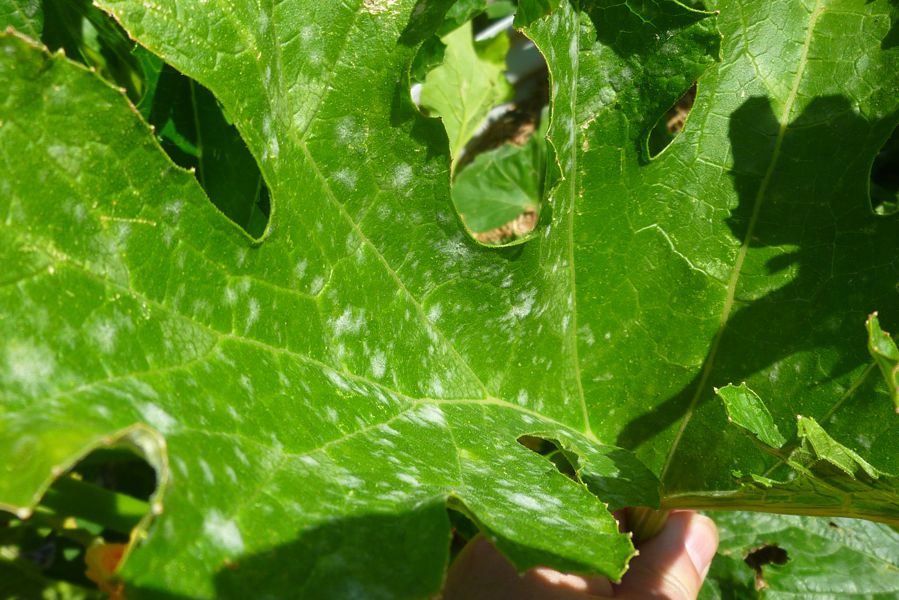
Powdery mildew is the name of a variety of fungi, that affect the leaves of plants. They are present everywhere in the environment and are brought in by wind, birds and insects. Powdery mildew loves warm humid nights and dry, warm and shady areas of the garden. Really wet conditions and constant very high or very low temperatures are actually not the conditions where the fungus thrives.
If the conditions are right, once spores of the fungus reach a suitable host they grow into the leaf and start to feed on the plants nutrients. The infection becomes obvious when we see leaves covered with un-regular white or gray, furry or powdery patches most often on the top sides of the leaves. Leaves go yellow, wilt and dry out.
The presence of the fungus eating ladybird is always an indicator that there is a problem. It feeds on the mildew, but it will never be able to contain it.
Which plants are affected?
There are several sorts of powdery mildew affecting different plants, but they are all causing the same problems and can be treated the same way. Plants especially susceptible to powdery mildew are the gourd family (melons, squashes, zucchinis, cucumbers). The fungus also attacks the legume family (peas, beans), rosemary, strawberries and the nightshade family (tomatoes, capsicum, eggplant, chili).